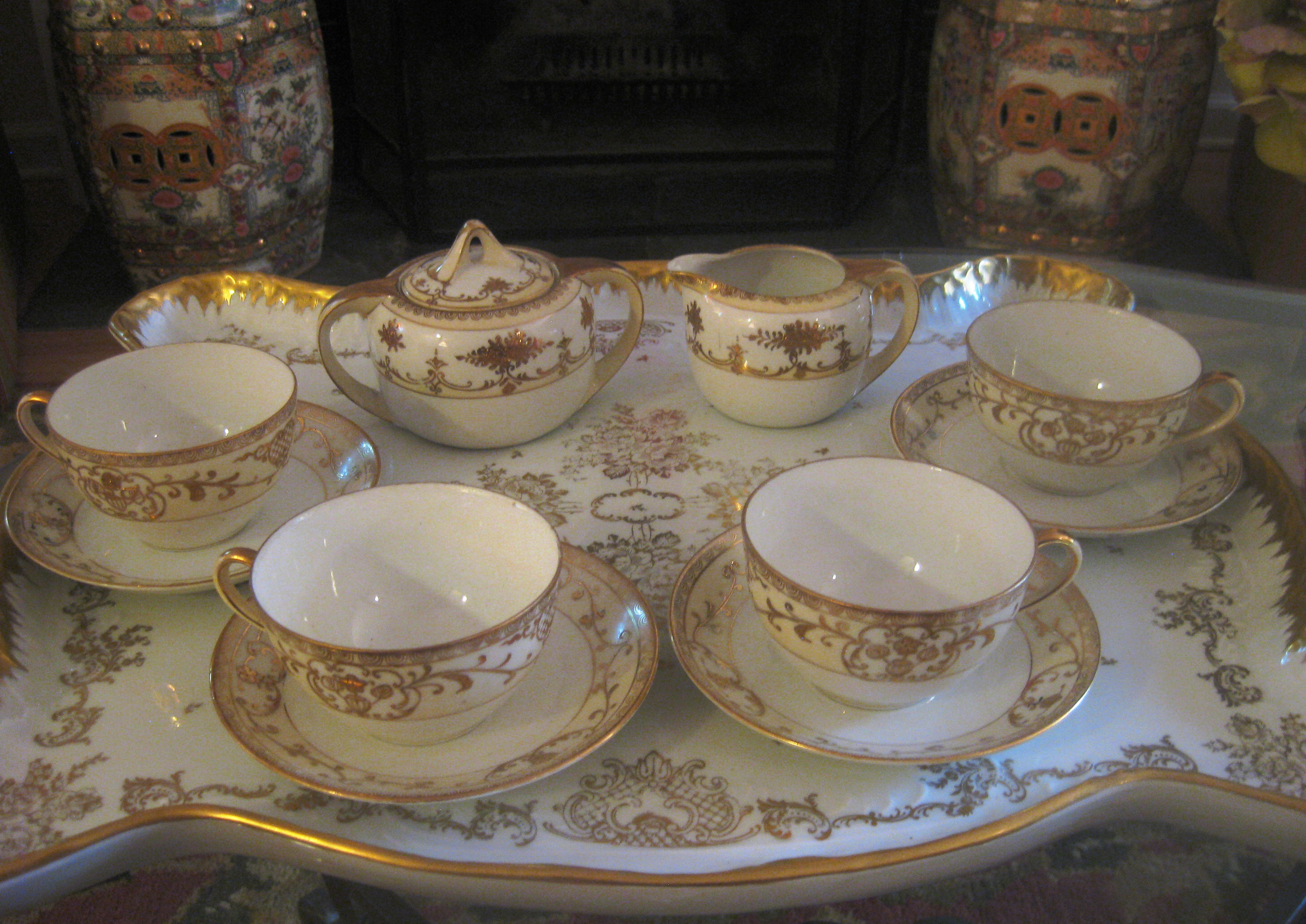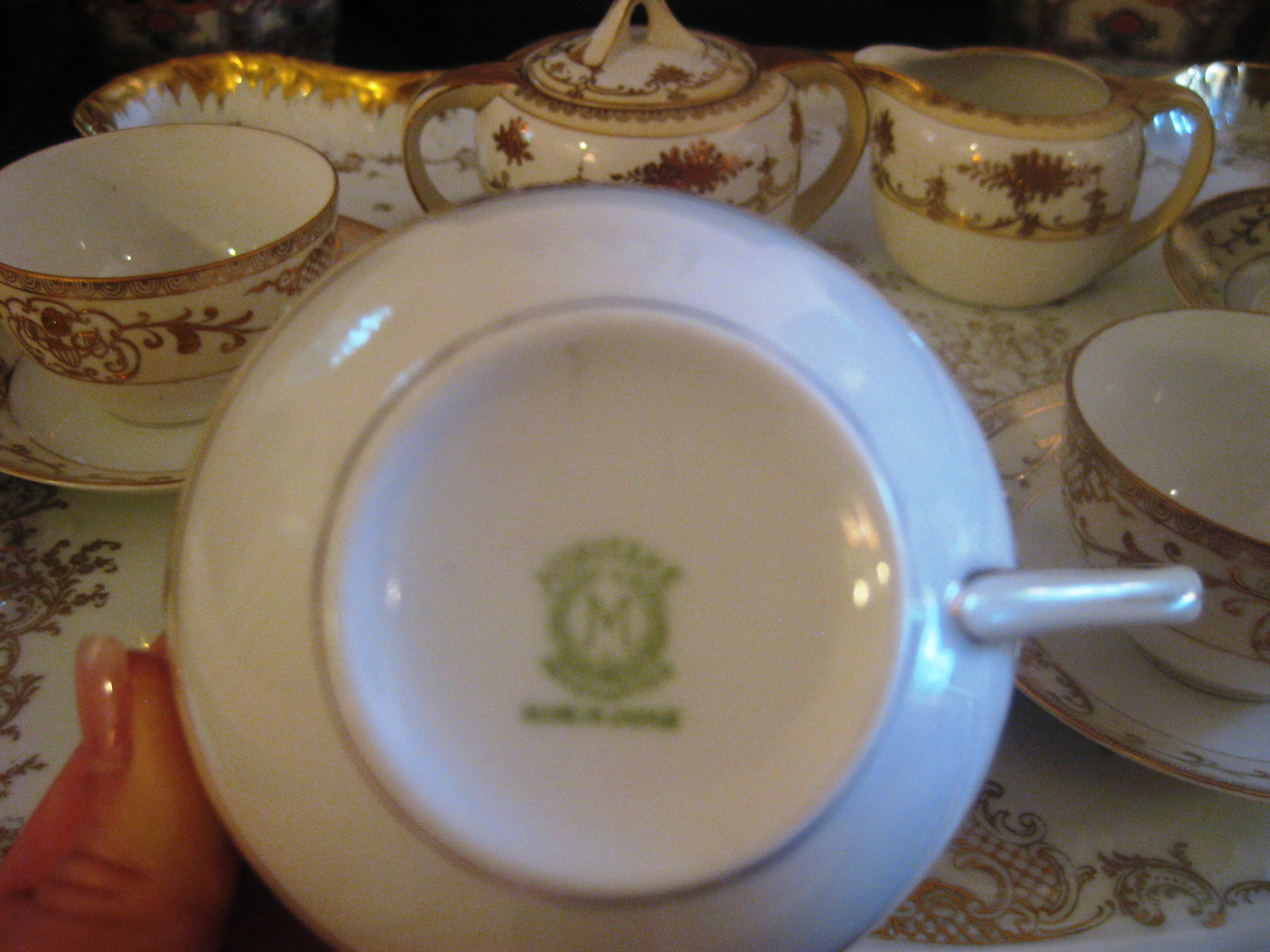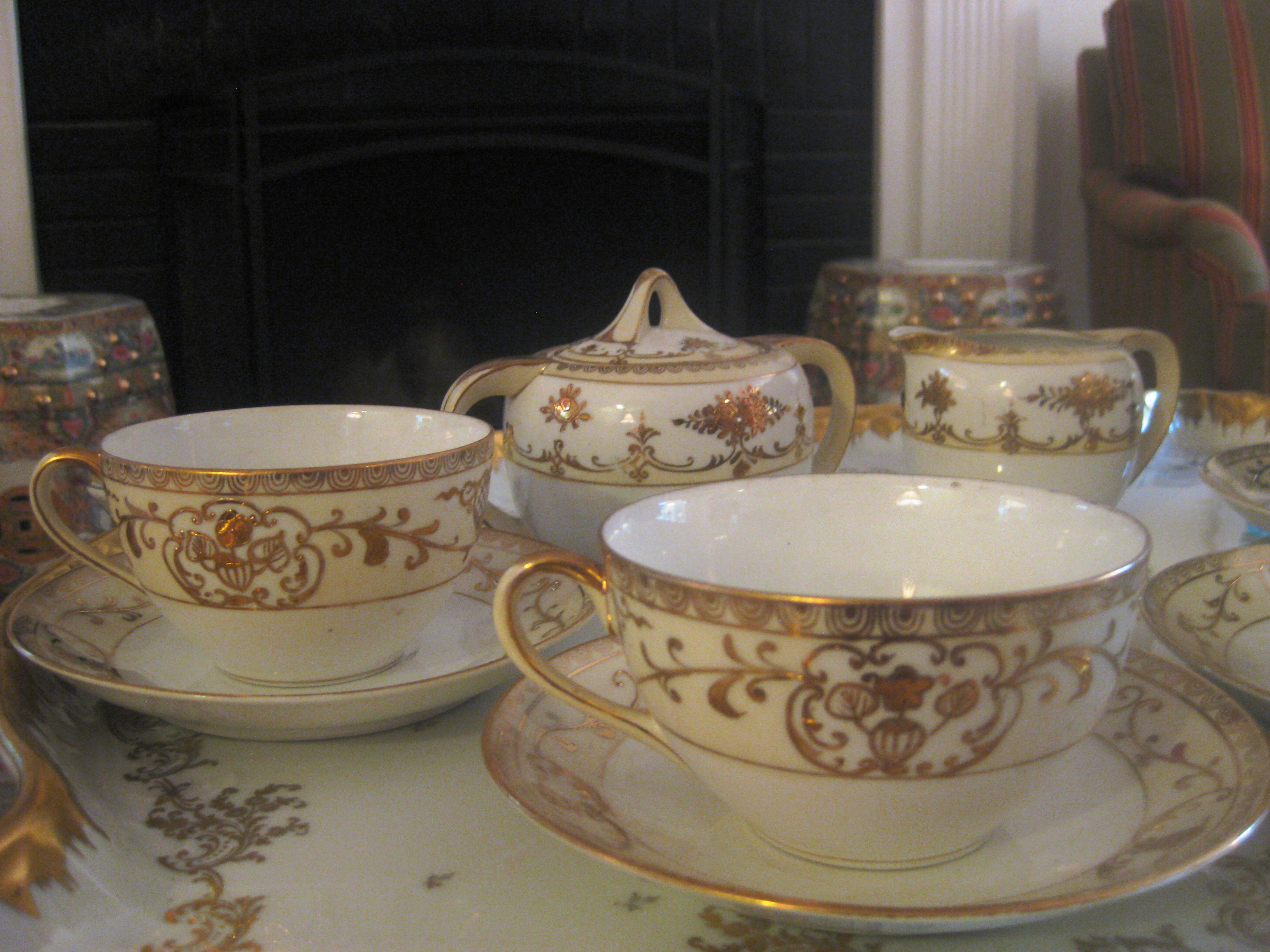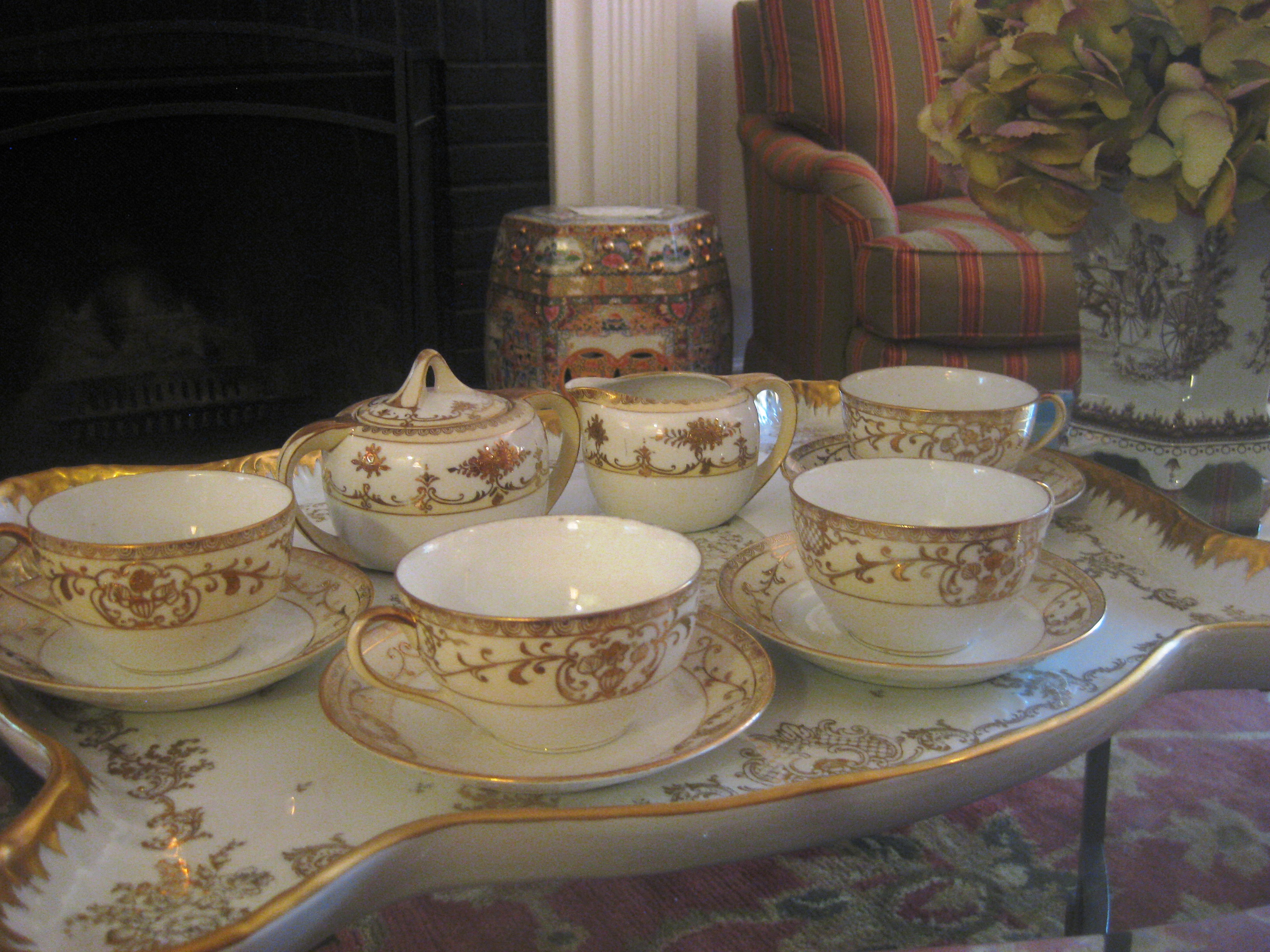“A woman is like a tea bag, you can not tell how strong she is until you put her in hot water”-Eleanor Roosevelt
I found this elegant vintage Noritake tea set while antiquing in Cape May back in April at West End Garage. I love all the handpainted scrolling in gold-timeless! The set is in mint condition and included sugar, creamer, and four cups and saucers.
The markings on this set is “M” for Morimura in a wreath, crowned by “NORITAKE” and below, “Hand painted” and “Made in Japan”. The use of the “M” gives a date before 1953 when the long used “M” in a wreath was replaced with a “N” for Noritake. Until 1921 Noritake predominately marked export wares Nippon meaning Japan in Japanese, while most back stamps after 1921 state “Japan” or “Made in Japan.” From the early 1920 and probably until 1940 most if not all US market patterns were designed in New York.
The 1921-1941 Period
The period from 1921 until 1941 is a time easily set apart in Noritake production. It is clearly defined on both ends by two events: a change in U.S. law in 1921 and the entry into World War II in 1941.
Until 1921 Noritake predominately marked export wares “Nippon,” one word used to describe the country of Japan. In 1921 American import law changed to require the place of origin be marked on a product in English. Since Nippon was an adaptation of a description of the island country in the native language, Nippon was no longer acceptable under the new law. Backstamps after 1921 state “Japan” or “Made in Japan.”
From the event of the back stamps giving up the “Nippon” mark and beginning with being marked “Japan” or “Made in Japan. i.e. in the early 1920’s we can assume that all Noritake porcelain were actually designed in New York, for the US market. From the up market art deco designs of the late 1920s the designs of the 1930s took a markedly more pragmatic shape after the world-wide depression. Still, marketed in department stores and Five & Dimes, Noritake took “art deco” into Americas homes and onto their tables. Much of the “lustreware” where a thin metallic film was applied over a bright single-color glaze, often with art deco theme decals in combination with hand painting, dates to this period.







